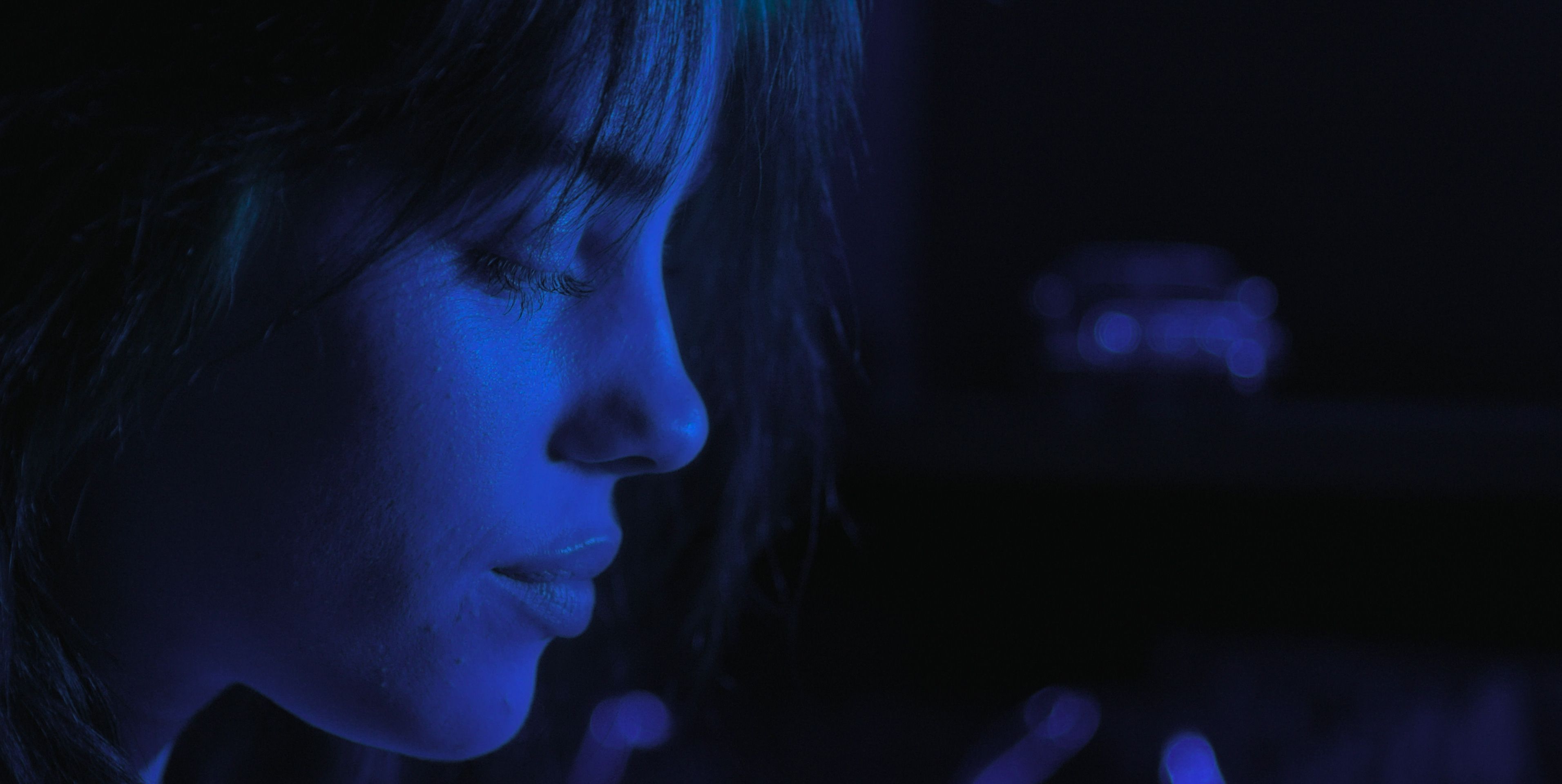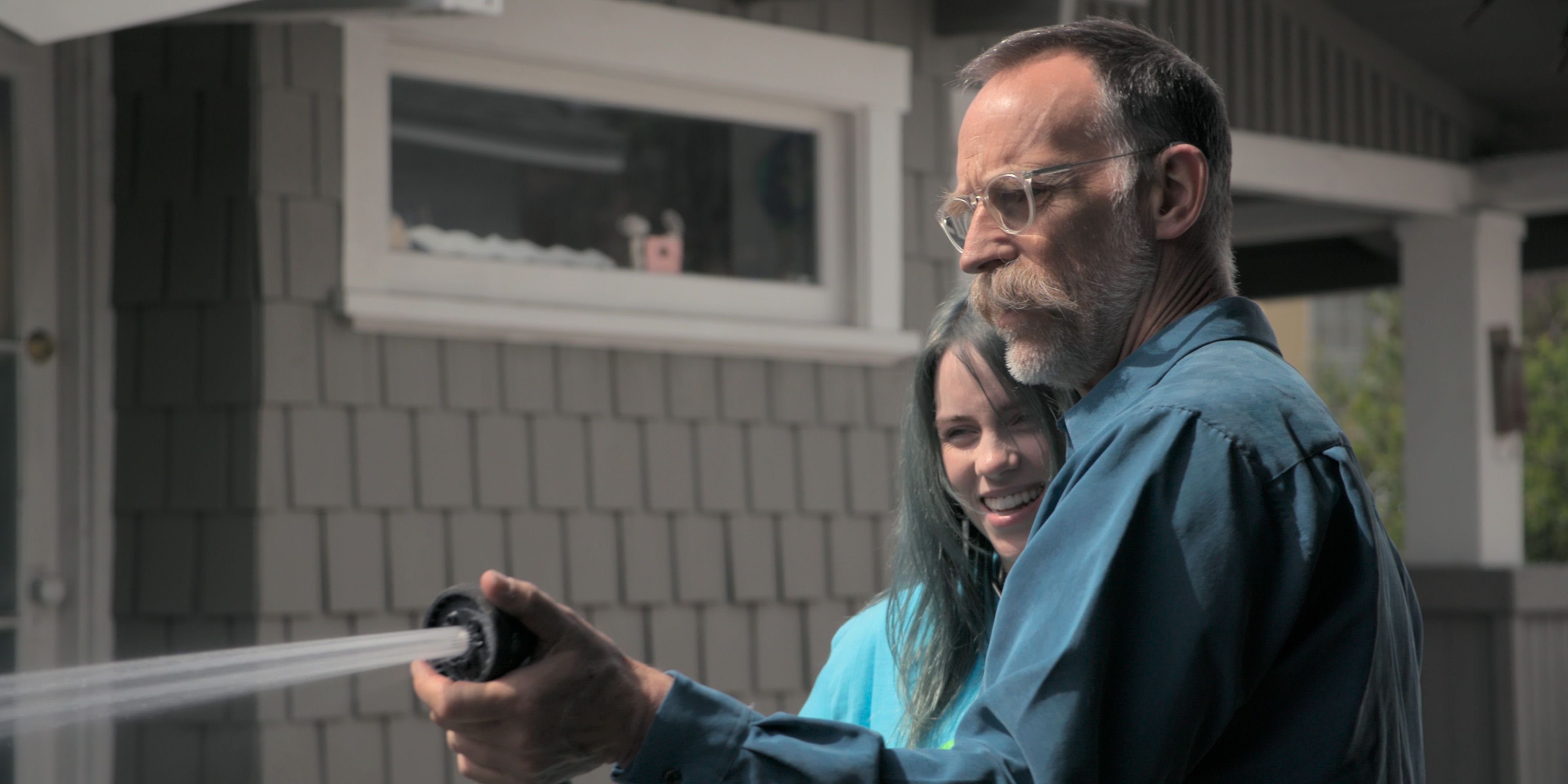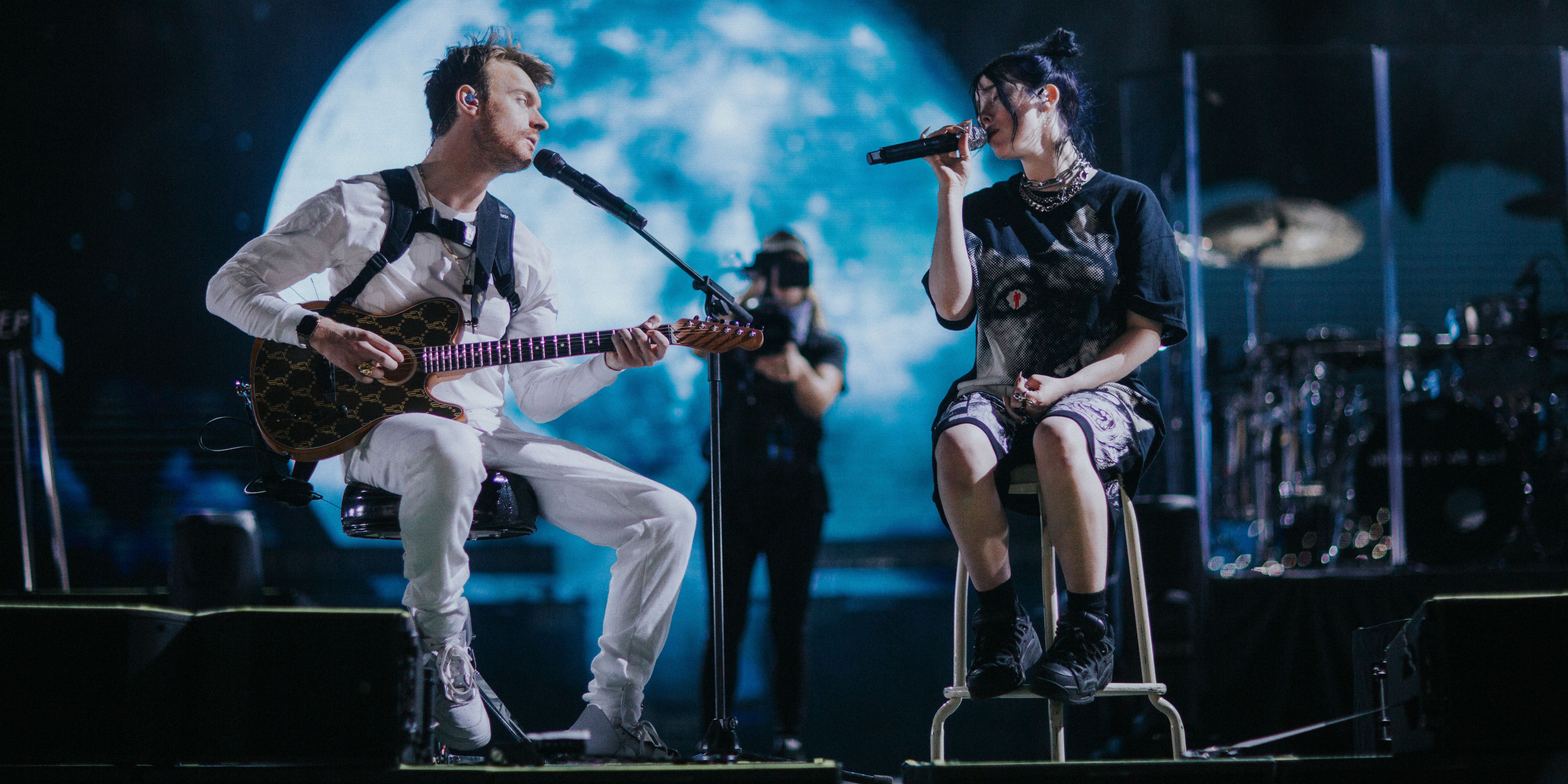I’m a Billie Eilish fan. I think her music choices are captivating, her lyrics are enigmatic yet emotionally understandable, and her visual language is so specific. But even as an Eilish fan — and more generally, a fan of pop music — two hours and 20 minutes of a documentary about her is a lot to ask. Unfortunately, Billie Eilish: The World’s a Little Blurry does not justify its lengthy running time in any captivating, understandable, or specific way. At its fleeting best, it’s an interesting chronicle of the creative process, the pop star apparatus, and a temperature check as to how our nation’s teenagers are feeling. At its pervasive worst, it plays like a rough assembly cut, a collection of “stuff” without meaning that seems to go against a purposeful thesis statement delivered by its subject.
Multiple award-winning documentary filmmaker R.J. Cutler (Belushi) helms The World’s a Little Blurry with an invisible touch. He’s either a fly on the wall or using footage captured by Eilish and her family, including her collaborating brother, songwriter/producer/performer FINNEAS. With this unadorned, simple style, we watch all manner of things happen in the breakout portion of Eilish’s career, from the recording sessions of her debut album WHEN WE ALL FALL ASLEEP, WHERE DO WE GO?, to the struggles that come from pushing one’s body through constant touring, to the multiple Grammy wins and Justin Bieber FaceTimes that shock Eilish into tears. Cutler’s (and the Eilish family’s) cameras capture handheld, obviously digital, unfinessed images of all these moments, rough edges and all. But what happens when a film is entirely rough edges with nothing at its core?
To Cutler’s credit, this raw approach sometimes strikes fascinating nerves. Watching Eilish and FINNEAS’ creative process occur in real time, especially for folks who love the album, is engaging, fascinating, and sometimes frustrating, with both siblings coming off like entitled brats one second and sensitive soul-seekers the next. It’s especially interesting to see their intimate, homemade, literal bedroom style of production immediately crash against the obligations of “being a giant pop star”; to see Eilish recreate the experience of writing a song on her bed on a giant stage in front of thousands of people is an emotional trip. Cutler’s tendency to keep the camera rolling means people keep talking, an approach that’s especially vital to hearing Eilish’s parents, Maggie Baird and Patrick O'Connell, offer their perspectives not just on Eilish’s superstardom, but her status as a regular teenager. It’s important to note that the majority of this documentary was shot before Eilish turned 18, and the film’s depictions of an inherently fraught adolescence jammed against the surrealness of superstardom rank among its strongest, most interesting moments.
But after the film finds these moments, it has no idea what to do with them, no idea how to arrange them in any meaningful order, no idea what it’s trying to say about its subject. I can understand this freewheeling, elliptic approach to filmmaking as an attempt at subjectivity, an attempt to exist from the POV of Eilish herself, who’s still clearly figuring out her life, her status as being a public figure not allowed to fail, her growth as a young adult. But this attempt betrays Eilish herself, which feels especially odd given how much of the film is spent watching Eilish command her creative vision with authority and respect (she’s a great music video director!) and admonishing the adults in her life for letting her down (after a particularly emotional performance, she is thrust upon by multiple record execs without anyone protecting her).
When speaking about her songwriting process, Eilish says she’s not interested in making a purposeful statement. She just speaks rawly and bluntly about how she feels. Then later, she finds out she retroactively made a statement, “which I love, because I didn’t realize I was.” This film lets Eilish speak and speak and speak, for two hours and 20 minutes, and doesn’t put in the second half of what she needs. It doesn’t coalesce into a statement, it doesn’t give her the context or shape she needs to shine, and it doesn’t amount to anything of substance except for the most completist of Eilish fans (an odd thing to be given her stardom is just beginning).
To compare it to another recent documentary about a mega pop star, Taylor Swift’s Miss Americana runs only 85 minutes. At the end of its intentional story, I immediately wanted to revisit all of Swift’s music. At the end of The World’s a Little Blurry’s messy attempts at story, I just needed a break.
Grade: C-
Billie Eilish: The World's a Little Blurry comes to Apple TV+ February 26.



